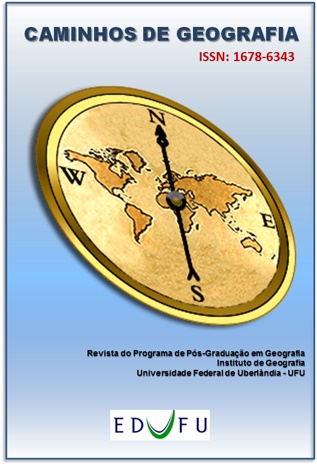(RE) STRUCTURING THE CITY AND THE NEW EXPRESSIONS OF URBAN CENTRALITY IN THE CITY OF ANANINDEUA, AMAZÔNIA PARAENSE
DOI:
https://doi.org/10.14393/RCG228155203Keywords:
Centro e Centralidade Urbana, (Re)estruturação da Cidade, Cidades Amazônicas, AnanindeuaAbstract
Brazilian and Amazonian cities have been going through multiple, successive and complex socio-spatial transformations at the threshold of the 21st century. These transformations are linked to the urbanization of the territory, (re)structuring of metropolitan and non-metropolitan cities. On a local scale, the city of Ananindeua is currently revealing itself as a space of intense socio-spatial "metamorphoses" associated to State actions, the territorialization of new economic agents of commerce and services that operate on multiple scales. The present article aims to analyze how the new agents of commerce and services have been interfering in the (re)structuring of the city and in the (re)production of the center and the urban centrality in Ananindeua-PA, since the years 2000. As for methodological procedures, bibliographic and documentary surveys, qualitative systematic observations, photographic records, cartographic production and semi-structured interviews were carried out. The research showed that the territorialization of new agents of commerce and services in Ananindeua has been contributing to the enlargement of the unequal social division in the city space, to accelerated changes in urban structures and to the constitution of a "multi(poli)centric" city, characterized by multiple centers, several urban centralities and the coexistence of different, diverse and unequal urban times, temporalities and spatialities.
Downloads
Downloads
Published
How to Cite
Issue
Section
License
Autores que publicam nesta revista concordam com os seguintes termos: a) Autores mantém os direitos autorais e concedem à revista o direito de primeira publicação, com o trabalho licenciado sob a Creative Commons Atribuição-NãoComercial-SemDerivações 4.0 Internacional. b) Autores têm permissão e são estimulados a publicar e distribuir seu trabalho online (ex.: em repositórios institucionais ou na sua página pessoal), já que isso pode gerar alterações produtivas, bem como aumentar o impacto e a citação do trabalho publicado. c) Em virtude de aparecerem nesta revista de acesso público, os artigos são de uso gratuito, com atribuições próprias, em aplicações educacionais e não-comerciais.











